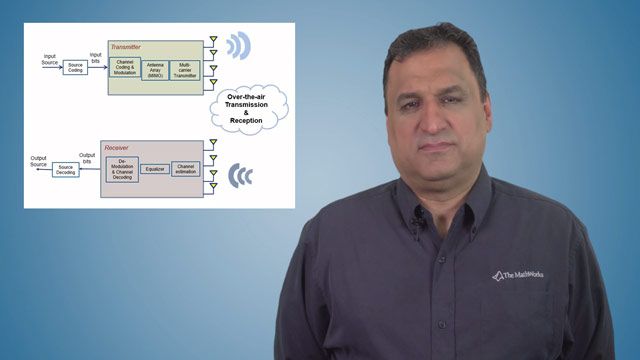Power Amplifier Modeling and DPD Design with MATLAB
Innovative design of power efficient and ultra-linear transmitters relies on two major technologies: the availability of low-cost power amplifiers and the use of digital signal processing techniques to mitigate RF impairments. Meeting the desired transmitter requirements is increasingly challenging in modern wireless systems due to modulated signals with large bandwidths and with different peak-to-average power ratios.
Algorithms for digital pre-distortion are often developed using MATLAB® to evaluate different adaption strategies and to optimize the trade-off between complexity and efficiency. Unfortunately, such algorithms cannot be developed or tested in isolation and require the presence of the power amplifier, a low-power RF front end, and the analog-to-digital interface to assess feasibility and system-level performance.
In the design process of communications systems, transmitter linearization techniques are habitually tested late in the lab when the actual hardware for the power amplifier and RF front end is available. Having an accurate model of the power amplifier enables early algorithm exploration, reducing risks and decreasing the number of design iterations.
With RF models that anticipate nonlinearity as well as memory effects introduced by power amplifiers, designers can use system-level models to evaluate adaptive architectures, estimate performance, and debug faults. The same MATLAB framework can be used to develop and simulate DPD algorithms in the presence of the power amplifier RF model, as well as to target FPGA platforms for lab prototyping in the presence of the actual device.
In this demonstration, you will learn how to develop different power amplifier models in MATLAB, achieving the desired degree of accuracy. You will also learn how to simulate the power amplifier model in a closed-loop simulation and develop DPD algorithms to improve the performance of the RF system.
Published: 15 Mar 2018




